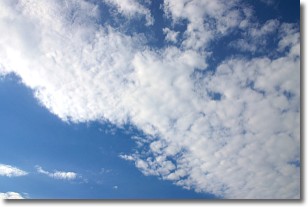Weather Alert in Nebraska
Air Quality Alert issued July 31 at 1:08PM CDT by NWS Hastings NE
AREAS AFFECTED: Valley; Greeley; Nance; Sherman; Howard; Merrick; Polk; Buffalo; Hall; Hamilton; York; Kearney; Adams; Clay; Fillmore; Franklin; Webster; Nuckolls; Thayer
DESCRIPTION: The following is transmitted in collaboration with the Nebraska Department of Health and Human Services and the Nebraska Department of Environment and Energy... WHAT...Air Quality Alert WHERE...Eastern and Central Nebraska WHEN... 07/31/2025 1:00 PM until 08/01/2025 5:00 PM POLLUTANT...PM 2.5 particulates AIR QUALITY INDEX...Moderate to Unhealthy for Sensitive Groups ADDITIONAL DETAILS... An alert for possible Moderate (Air Quality Index yellow category) to Unhealthy for Sensitive Groups air quality (Air Quality Index orange category) due to smoke has been issued for the following Nebraska counties: Adams, Antelope, Boone, Boyd, Buffalo, Burt, Butler, Cass, Cedar, Clay, Cuming, Colfax, Cuming, Dakota, Dixon, Dodge, Douglas, Fillmore, Franklin, Gage, Garfield, Greeley, Hamilton, Holt, Howard, Jefferson, Johnson, Kearney, Knox, Lancaster, Madison, Merrick, Nance, Nemaha, Nuckolls, Otoe, Pawnee, Pierce, Platte, Polk, Richardson, Saline, Sarpy, Saunders, Seward, Sherman, Stanton, Thayer, Thurston, Valley, Washington, Wayne, York, from July 31, 1:00 pm through August 01, 5:00 pm. During Moderate (AQI yellow category) conditions, those who are unusually sensitive to particle pollution should consider reducing prolonged or heavy exertion. Smoke levels and wind directions are monitored by Nebraska and other states to predict when impacts to the air quality may occur. Air Quality alerts for smoke are issued for affected areas by the Nebraska Department of Health and Human Services and Department of Water, Energy, and Environment and posted on agency webpages and social media sites. By notifying the media and local health departments, alerts help citizens protect their health by informing them of days where outdoor activities should be reduced or avoided to minimize exposure to smoke. Alerts are based on data available from weather forecasts, smoke plume modeling, satellite imagery, and from air quality monitors located in Omaha, Bellevue, Lincoln, Beatrice, Grand Island, and Scottsbluff.
INSTRUCTION: N/A
Want more detail? Get the Complete 7 Day and Night Detailed Forecast!
Current U.S. National Radar--Current
The Current National Weather Radar is shown below with a UTC Time (subtract 5 hours from UTC to get Eastern Time).

National Weather Forecast--Current
The Current National Weather Forecast and National Weather Map are shown below.

National Weather Forecast for Tomorrow
Tomorrow National Weather Forecast and Tomorrow National Weather Map are show below.

North America Water Vapor (Moisture)
This map shows recent moisture content over North America. Bright and colored areas show high moisture (ie, clouds); brown indicates very little moisture present; black indicates no moisture.

Weather Topic: What are Stratus Clouds?
Home - Education - Cloud Types - Stratus Clouds
 Next Topic: Wall Clouds
Next Topic: Wall Clouds
Stratus clouds are similar to altostratus clouds, but form at a
lower altitude and are identified by their fog-like appearance, lacking the
distinguishing features of most clouds.
Stratus clouds are wider than most clouds, and their base has a smooth, uniform
look which is lighter in color than a nimbostratus cloud.
The presence of a stratus cloud indicates the possibility of minor precipitation,
such as drizzle, but heavier precipitation does not typically arrive in the form
of a stratus cloud.
Next Topic: Wall Clouds
Weather Topic: What are Altocumulus Clouds?
Home - Education - Cloud Types - Altocumulus Clouds
 Next Topic: Altostratus Clouds
Next Topic: Altostratus Clouds
Similar to cirrocumulus clouds, altocumulus clouds are
characterized by cloud patches. They are distinguished by larger cloudlets
than cirrocumulus clouds but are still smaller than stratocumulus clouds.
Altocumulus clouds most commonly form in middle altitudes (between 2 and 5 km)
and may resemble, at times, the shape of a flying saucer.
These uncommon formations, called altocumulus lenticularis, are created by uplift
in the atmosphere and are most often seen in close proximity to mountains.
Next Topic: Altostratus Clouds
Current conditions powered by WeatherAPI.com




